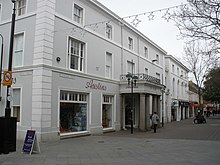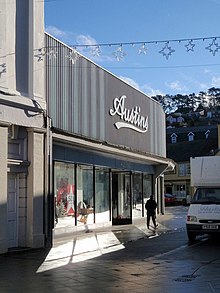
A department store is a retail establishment offering a wide range of consumer goods in different areas of the store, each area ("department") specializing in a product category. In modern major cities, the department store made a dramatic appearance in the middle of the 19th century, and permanently reshaped shopping habits, and the definition of service and luxury. Similar developments were under way in London, in Paris and in New York City (Stewart's).
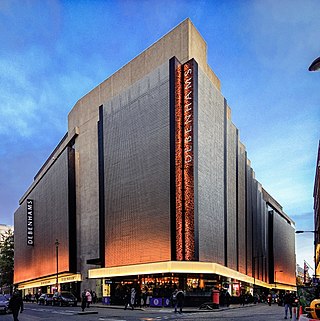
Debenhams plc was a British department store chain operating in the United Kingdom, Denmark and the Republic of Ireland, and is still operating as a franchise in seven Middle East countries. It was founded in 1778 as a single store in London and grew to 178 locations across those countries, also owning the Danish department store chain Magasin du Nord. In its final years, its headquarters were within the premises of its flagship store in Oxford Street, London. The range of goods sold included middle-to-high-end clothing, beauty, household items, and furniture.

Newton Abbot is a market town and civil parish on the River Teign in the Teignbridge District of Devon, England. Its population was 24,029 in 2011, and was estimated at 26,655 in 2019. It grew rapidly in the Victorian era as the home of the South Devon Railway locomotive works. This later became a major steam engine shed, retained to service British Railways diesel locomotives until 1981. It now houses the Brunel industrial estate. The town has a race course nearby, the most westerly in England, and a country park, Decoy. It is twinned with Besigheim in Germany and Ay in France.

Dunnes Stores is an Irish multinational retail chain that primarily sells food, clothes and household wares. It was founded by Ben Dunne in 1944. In addition to its main customer base in Ireland, the chain also has operations in Spain. The format of most of the chain's stores in Ireland involves a grocery supermarket operating alongside a clothing/textiles store, although some stores contain only textiles and some contain only a supermarket. The grocery side of the business does not operate outside of Ireland, save for a limited grocery range in the Spanish stores. The larger stores usually contain a café branded as either Café Sol or Dunnes Stores Café.

Allders was an independent department store operating in the United Kingdom.

House of Fraser and Frasers are a British department store chain with 26 locations across the United Kingdom and 2 in Ireland, part of Frasers Group. It was established in Glasgow, Scotland in 1849 as Arthur and Fraser. By 1891, it was known as Fraser & Sons. The company grew steadily during the early 20th century and in 1936 began a period of growth through acquisition which would continue for over forty years. House of Fraser Ltd was incorporated in 1941 and first listed on the London Stock Exchange six years later.
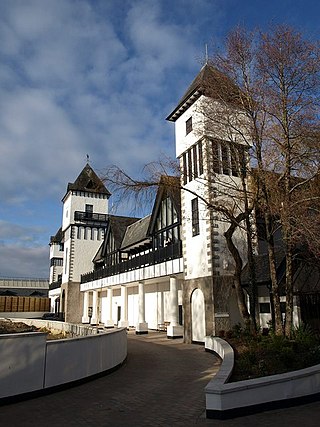
Trago Mills is a chain of four department stores in south Cornwall, south Devon in England, and south Wales. It owns a site with an amusement park and some independent businesses, adjoining the store near Newton Abbot.

Arthur Barnett Ltd, trading as Arthur Barnett and often referred to as Arthur Barnett's, was a department store in Dunedin, New Zealand. Established in 1903 by Arthur Barnett the store first began as a drapery for men and boys, progressing over the years to become one of Dunedin's most successful department stores. As well as their flagship George Street store, Arthur Barnett had stores in Balclutha, Alexandra, Oamaru, and Christchurch. They also briefly had a branch in Melbourne which operated from 1970 to 1977. This branch sold mainly carpeting and furniture. The final Arthur Barnett store and its online store was taken over by Invercargill-based department store chain H & J Smith in 2015.

McWhirters is a heritage-listed former department store at Wickham Street, Fortitude Valley, City of Brisbane, Queensland, Australia. It is also known as McWhirters Marketplace, McWhirters & Son Ltd, and Myer. It was added to the Queensland Heritage Register on 21 October 1992.
United Drapery Stores, or UDS, was a British retail group that dominated the British high street from the 1950s to the early 1980s.
William Courtenay, 1st Viscount Courtenay, also de jure 7th Earl of Devon, was a British peer. He was the son of William Courtenay, 6th Earl of Devon and 2nd Baronet Courtenay, and Lady Anne Bertie.
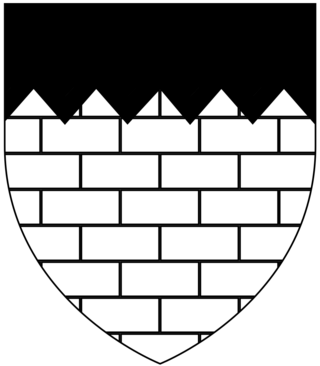
Sir Richard Reynell (c.1558–1633) of Forde in the parish of Wolborough, Devon, was an English lawyer and Member of Parliament. He built the surviving Ford House, now in the suburbs of Newton Abbot and his daughter and sole heiress Jane Reynell, married the Parliamentary general Sir William Waller.

Highweek, less commonly called Highweek Village is an ecclesiastical parish, former manor and village, now a suburb of Newton Abbot, but still retaining its village identity, in the civil parish of Newton Abbot, in the Teignbridge district, in the county of Devon, England. It is prominent and recognisable due to its high location on a ridge on the north western edge of the town. The area is the centre of the modern electoral ward of Bradley. That ward's population at the 2011 census was 5,043.

Forde House, now known as Old Forde House, is a Grade I listed former manor house dating in back to c. 1550 in Newton Abbot, Devon, England. The building was substantially enlarged c. 1610 and is noted for its fine 17th-century wood-carving and plasterwork. Once the manor house of the parish of Wolborough, it is now absorbed into a suburb of Newton Abbot. The south front faces Torquay Road across the house's front lawn. The building was purchased in 1978 by Teignbridge District Council which then built itself a modern headquarters in the grounds which opened in 1987. The council offices now take the name Forde House, and the old mansion is known as Old Forde House.

Barkers of Kensington was a department store in Kensington High Street, Kensington, London. It began as a small drapery business, John Barker & Company, founded by John Barker and James Whitehead in 1870. Barkers grew rapidly to become one of London's largest and most well-known department stores.

The Devon and Exeter Institution is a subscription library in the City of Exeter, in Devon, United Kingdom, founded in 1813 for "The general diffusion of science, literature and the arts". It is situated at 7, Cathedral Close, Exeter, in a building facing the north side of Exeter Cathedral which was formerly the Exeter townhouse of the Courtenay family of Powderham Castle.
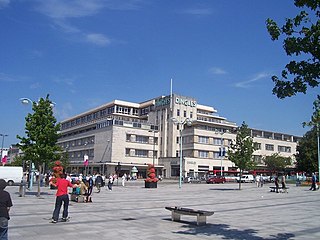
E Dingle & Co was a department store chain with its flagship store in Plymouth, England. It is now part of House of Fraser group.

St Leonard's Tower, Newton Abbot, popularly known as The Clock Tower, is a Grade II* listed building in Newton Abbot. It was constructed in the 15th-century as part of a Gothic-style church and was the site of William III's first proclamation in England. The adjoining nave was demolished in 1836 to improve traffic flows but the tower was saved by a local petition. The structure is owned by the town council and opened to the public on selected days.
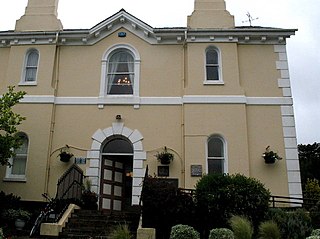
The Old Town Hall, also known as No. 9 Devon Square, is a former municipal building in Devon Square in Newton Abbot, a town in Devon, in England. The structure, which started life as a private house and was later converted for municipal use, is a Grade II listed building.
